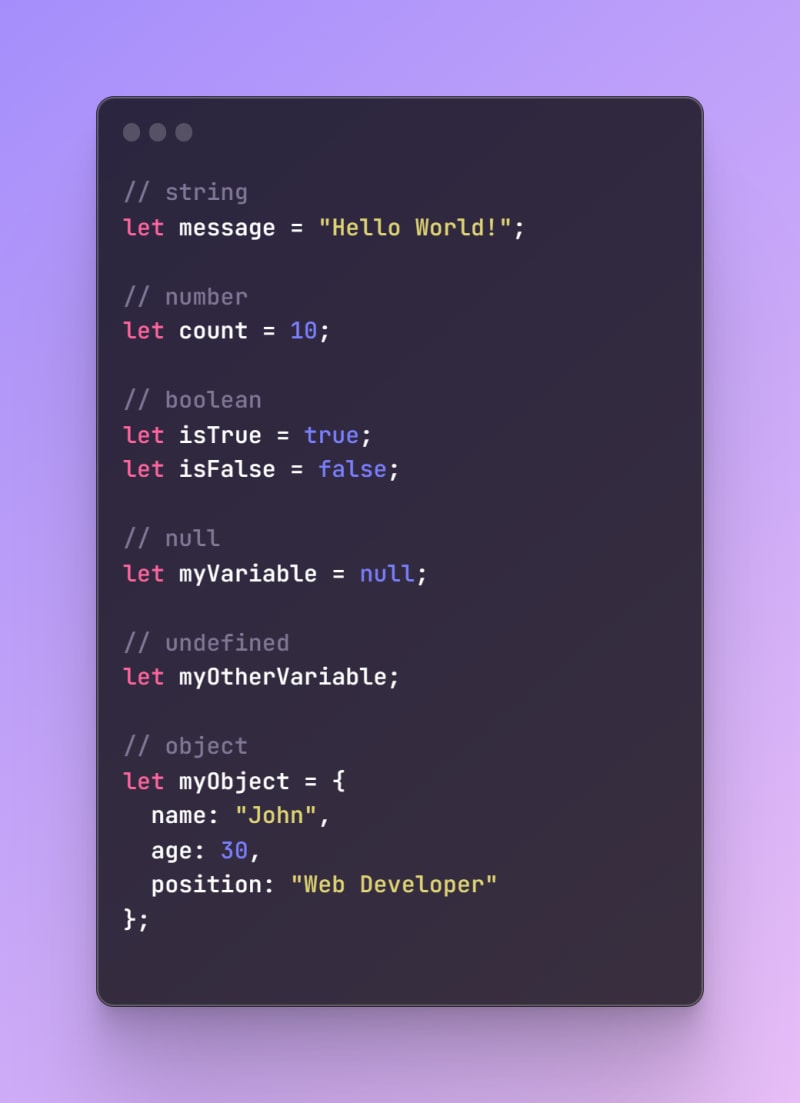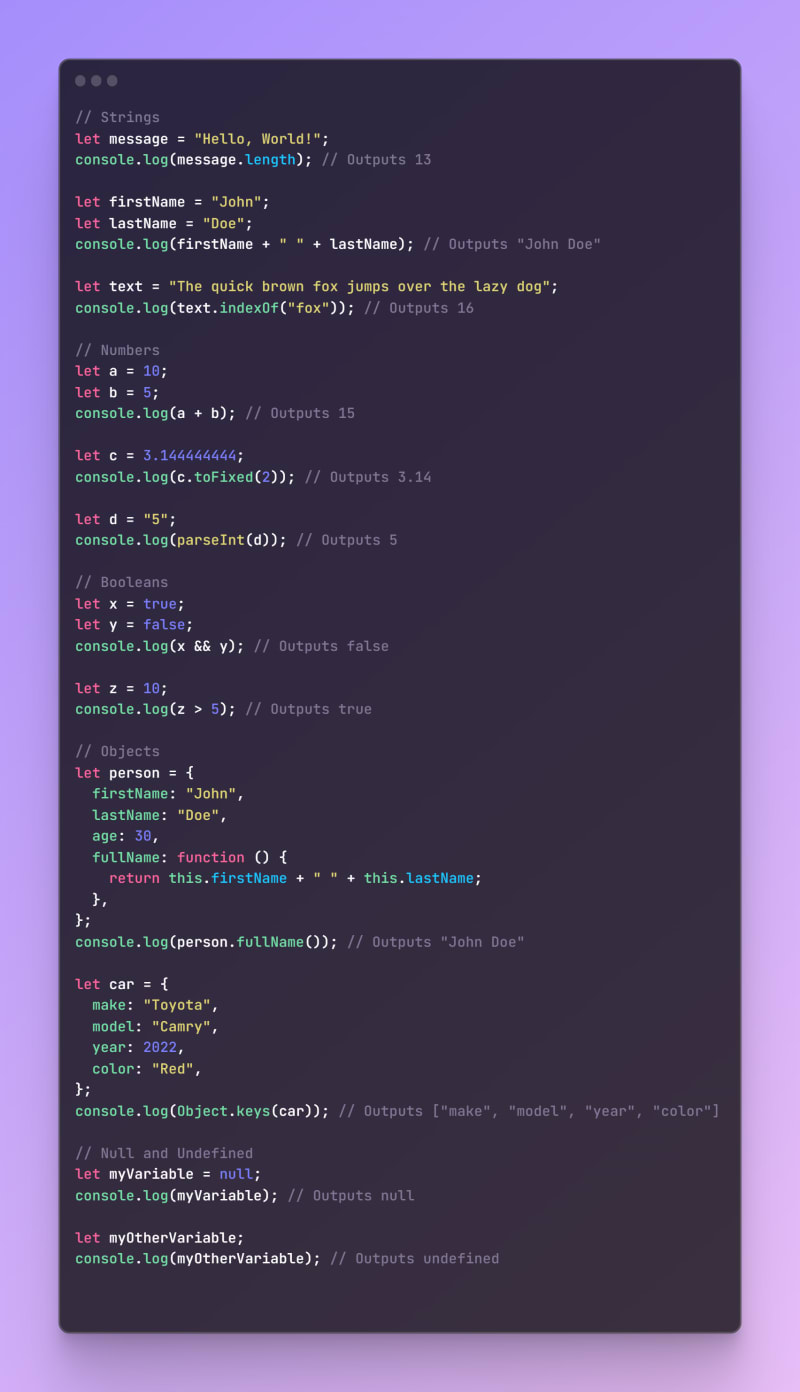An Interest In:
Web News this Week
- April 15, 2024
- April 14, 2024
- April 13, 2024
- April 12, 2024
- April 11, 2024
- April 10, 2024
- April 9, 2024
Week's Digest : Variables and Data Types in JavaScript
This is part of weekly newsletter, The Web Developer's Weekly Digest where we learn, discuss together about web development and this week's digest is about variables and data types in Javascript.
If you want to be part of the community, you can subscribe here.
Welcome to the second Digest!
We've covered scripting and the Document Object Model (DOM) in our previous newsletters, and now it's time to dive into one of the most fundamental concepts in JavaScript: variables and data types.
JavaScript supports several data types, such as strings, numbers, booleans, and objects, each with its own set of properties and methods. By using variables, we can store and manipulate this data in our code. In JavaScript, we declare variables using the 'var', 'let', or 'const' keywords, and assign values to them using the '=' operator. Proper naming conventions are essential when declaring variables, as it makes the code more readable and understandable.
Data types
JavaScript supports several data types, including strings, numbers, booleans, null, undefined, and objects. Here's an example of each data type in JavaScript:
In this example, 'message' is a string variable that stores a piece of text, 'count' is a number variable that stores a numerical value, 'isTrue' and 'isFalse' are boolean variables that store either true or false, 'myVariable' is a null variable that has no value, 'myOtherVariable' is an undefined variable that has not yet been assigned a value, and 'myObject' is an object that has several key-value pairs. Understanding these data types is crucial to creating effective and efficient JavaScript code.
Declaring and assigning variables
In JavaScript, we use 'var', 'let', or 'const' to declare variables. 'var' is the traditional way of declaring variables, but 'let' and 'const' are now preferred. 'let' is used when we want to change the value of the variable later on, while 'const' is used when the value of the variable remains the same throughout the code. Here's an example of assigning values to variables:
Manipulating and working with data types
Now that we have covered the basics of declaring variables and understanding data types, it's time to dive deeper into working with and manipulating data types in JavaScript. Check out the attached file for examples on how to work with strings, numbers, booleans, null, undefined, and objects. This will help you gain a better understanding of how to write effective and efficient JavaScript code.
Thanks for taking the time to read this week's edition of The Web Developer's Weekly Digest! We hope you found the information about JavaScript data types and variables useful in your development journey. In our next email, we'll be diving more into the world of variables by focusing on how to scope variables properly and working with objects and arrays.
Thank you for being a subscriber and I'll see you in the next digest!
You can subscribe to the Web Developer's Weekly Digest
Original Link: https://dev.to/lotfijb/weeks-digest-variables-and-data-types-in-javascript-44pb
Dev To
 An online community for sharing and discovering great ideas, having debates, and making friends
An online community for sharing and discovering great ideas, having debates, and making friendsMore About this Source Visit Dev To




